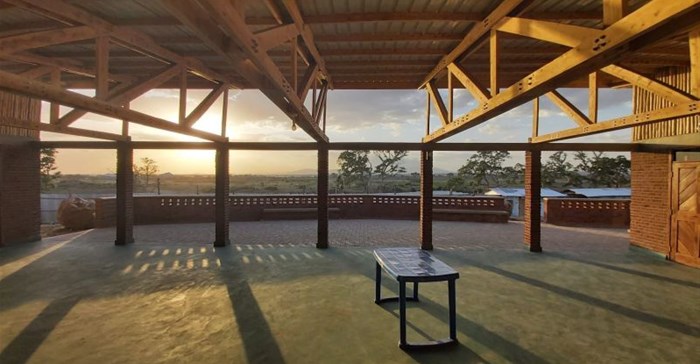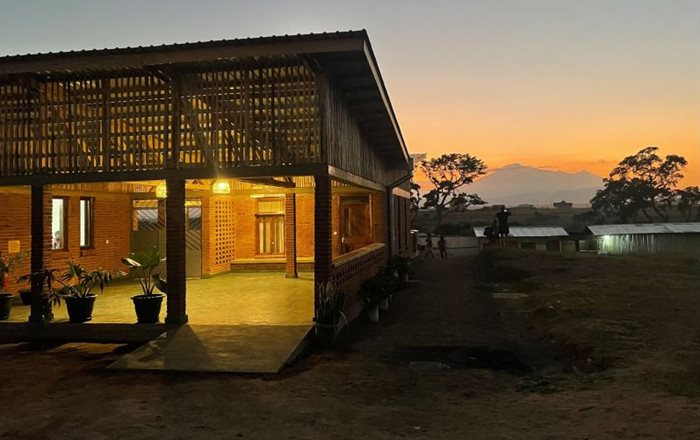
Subscribe & Follow
#WGBW23: The construction sector's role in achieving net zero

Taking a future ready approach to sustainable building design and construction is about addressing some key questions: How do we build to mitigate against the impacts of climate change, including societal impacts? Can we ensure a just transition to the green economy that addresses unemployment rates, access to resources and other social ills, rather than exacerbating inequality?
Social insecurity is a critical consideration in South Africa. With unemployment rates widening the inequality gap, we must seek out opportunities to enable economic participation in the green economy. This requires a circular approach to how we design and construct buildings, rather than the more traditional cradle-to-grave approach. A circular approach is about considering how we use resources such as water and energy, and how we manage waste and recycling. But it also speaks to the skills we need to develop amongst people to enable them to participate in the shift towards achieving net zero.
As it stands, there is a lot of legislation that developers and contractors need to adhere to, and these regulations intersect on matters pertaining to the natural environment – including but not limited to water and energy efficiency, natural environment and land contamination considerations, clean air and endangered species and protected land in special circumstances. But these codes – as important as they are – define minimum practice, not best practice.
Legal minimum requirement
Legislation, and certifications like Green Star and LEED, provide a legal minimum requirement and something to benchmark against respectively. But often the minimums are not good enough to make enough impact. Buildings must be designed for their occupants, not just to meet a legislated minimum requirement. For example, there is legislation that prescribes how much fresh air needs to be circulating in a building, but this stipulation is far lower than what we know to be optimal fresh air for human performance and health.
However, positive strides are being made. Out of the local power crisis, and since the legislated caps on private solar power generation capacity were lifted, renewable power generation capacity in South Africa has doubled in a year. It demonstrates how every crisis can also be viewed as an opportunity to make strides; to innovate and to see things differently.

For property developers to navigate the complexities of sustainable building, a clear vision or target is important. This allows us to quantify goals and work towards them, and making sure that benchmarking in design can take shape. The use of low embodied carbon in construction materials is a good example.
At the moment we know very little about exactly what embodied carbons are in building materials, so we can’t say what a realistic reduction target looks like. But if there’s no target for reducing it in the building and project plan, there’s also no need to establish the current baseline and, therefore, no way to reduce it. We must start somewhere, even if it is only with a target that helps to define what we don’t know yet.
Apply knowledge and voice ideas
It's also about not staying in your lane. Applying your knowledge or voicing ideas outside of your designated area of expertise is how innovation and change happens. There are principles inherent in future ready design and construction that can be applied in all aspects of building design.
First, design for adaptability and disassembly. Design buildings and infrastructure to be flexible and adaptable to changing needs, and easily disassembled at the end of their first life. Then, use materials that have a low environmental impact, and ensure that their origin and composition are transparent. It’s important to prioritise the efficient use of resources and create closed-loop systems where waste is eliminated and materials continuously reused across a full asset lifecycle, as well as to localise supply and skills in the value chain.
We must also shift away from short-term thinking – for example, building to meet minimum legislated requirements to save costs, without consideration for the long-term positive impact a best-practice design could produce. As an industry we must take a long-term view, considering the past, present and future uses of buildings, their spaces, materials and technologies.
Where we can, we must regenerate nature, and draw inspiration from natural systems in which nothing is wasted, implement nature-based solutions and protect water resources. We must use materials that can eventually return nutrients to the biosphere.
And finally, we must ensure a just transition to the green economy by upskilling and educating people, while collaborating with communities and building industry stakeholders, including architects, engineers, developers and policymakers.










